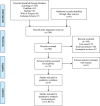The efficacy and safety of platelet-rich fibrin for rotator cuff tears: a meta-analysis
- PMID: 30103777
- PMCID: PMC6090707
- DOI: 10.1186/s13018-018-0881-3
The efficacy and safety of platelet-rich fibrin for rotator cuff tears: a meta-analysis
Abstract
Background: The aim of this meta-analysis was to evaluate the efficacy and safety of platelet-rich fibrin (PRF) in improving clinical outcomes in rotator cuff tears.
Methods: We searched the following databases: Pubmed, Embase, and Cochrane library databases from inception to April 2018. Studies that compared platelet-rich fibrin versus placebo for rotator cuff tears were included in this meta-analysis. Risk ratio (RR) with 95% confidence interval (CI) was pooled for discontinuous outcome, and weighted mean difference (WMD) with 95% CI was pooled for continuous outcome. Stata 12.0 was used for meta-analysis.
Results: A total of eight studies with 219 patients were finally included in this meta-analysis. Compared with the control group, PRF has a negative role in reducing the re-tear rate (RR = 1.30, 95% CI = 0.97 to 1.75; P = 0.082). Subgroup analysis of re-tear rate was consistent in all subgroup analyses (single row or double row, volume, and risk of bias). There was no significant difference between the American Shoulder and Elbow Surgeons scale, University of California at Los Angeles scale, Constant score, and side effect (P > 0.05).
Conclusion: In conclusion, our meta-analysis suggests that the PRF does not have better effect on improving the overall clinical outcomes and re-tear rate in the arthroscopic repair of rotator cuff tears.
Keywords: Meta-analysis; Platelet-rich fibrin; Rotator cuff tears.
Conflict of interest statement
Not applicable. This meta-analysis does not involve research on humans.
Not applicable.
The authors declare that they have no competing interests.
Springer Nature remains neutral with regard to jurisdictional claims in published maps and institutional affiliations.
Figures








References
Publication types
MeSH terms
LinkOut - more resources
Full Text Sources
Other Literature Sources
Medical
Miscellaneous

